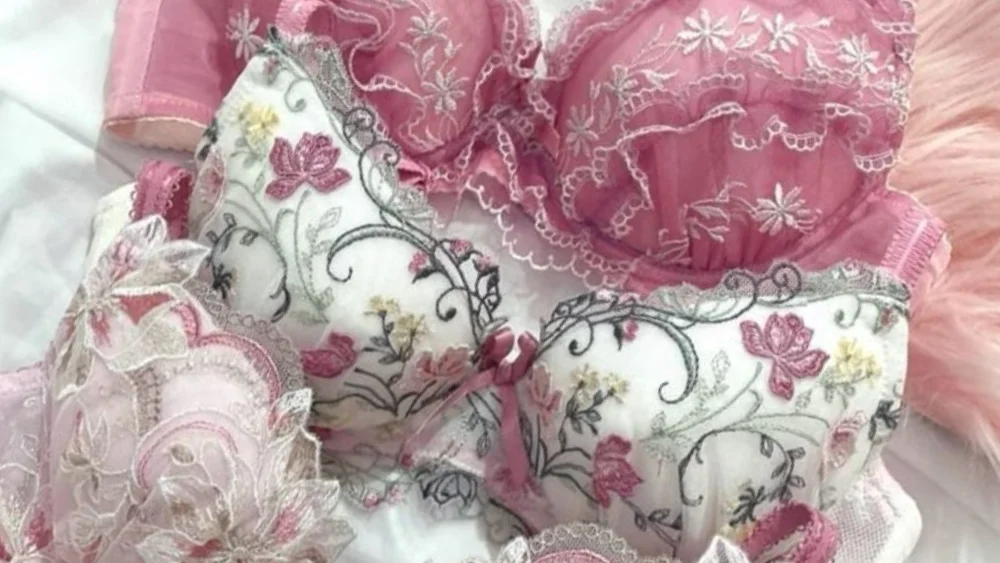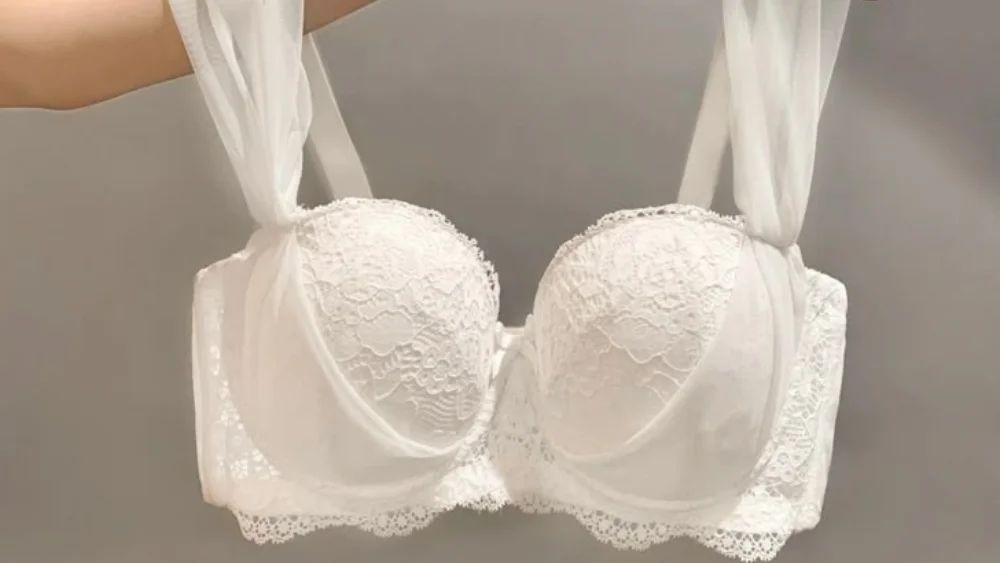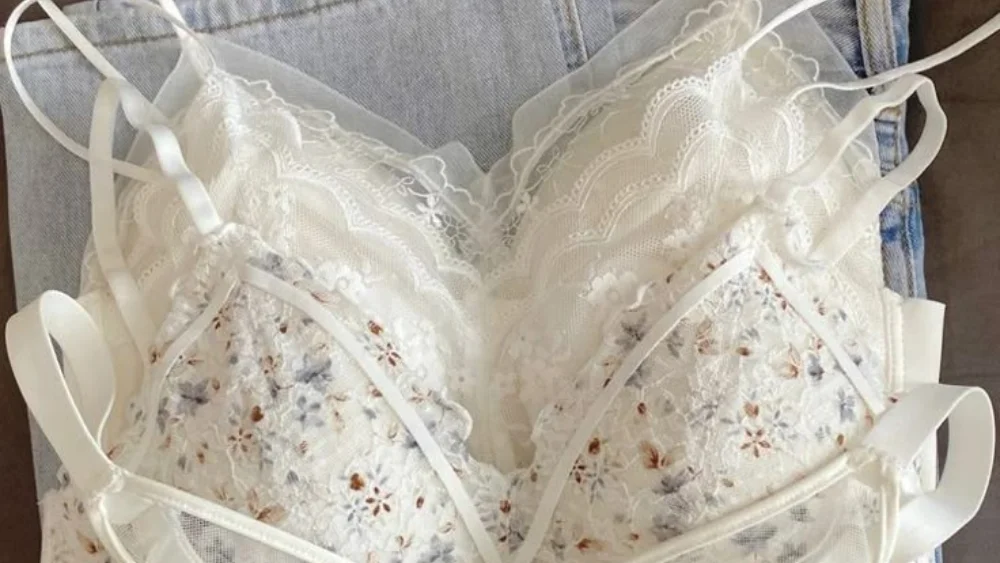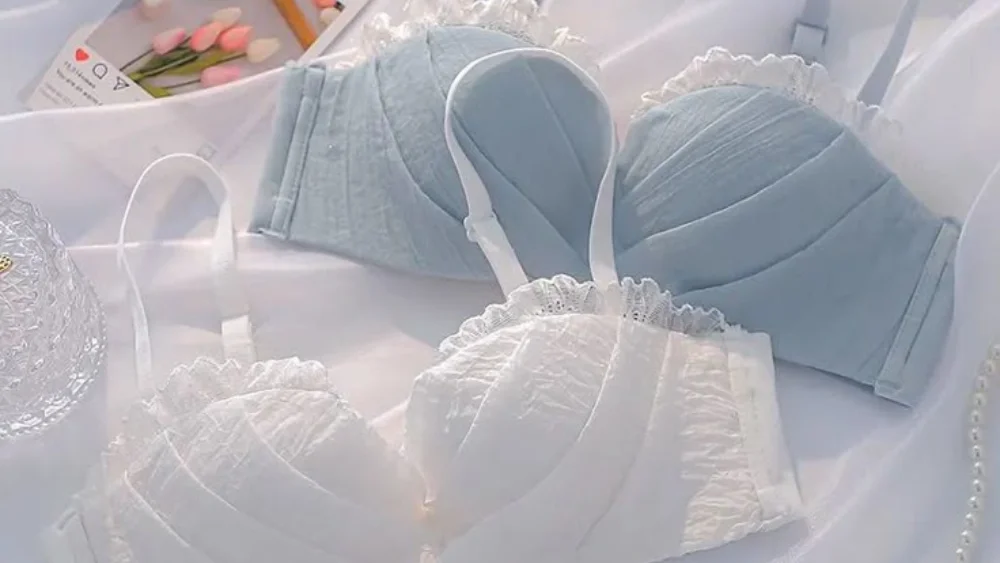Lingerie design goes beyond aesthetics—it embodies a brand’s identity and fosters emotional connections with consumers. From inclusive sizing to sustainable materials, modern lingerie brands are redefining personalization and quality. Discover how innovative lingerie design enhances brand value, strengthens loyalty, and transforms intimate apparel into a true form of self-expression.
Table of Contents
Lingerie Design: More Than Fabric—A Statement of Identity and Expression
Within a meticulously crafted piece of lingerie lies more than just soft fabrics and intricate cuts—it embodies the soul of a brand, the attitude of women, and an unspoken emotional connection. Many perceive lingerie as a mere essential hidden beneath clothing, yet brands that truly understand women’s needs recognize that lingerie design is not just about apparel; it is a form of self-expression and a representation of a brand’s unique identity.
When a woman selects a piece of lingerie, she is not merely considering comfort or support; she is choosing a symbol that reflects her inner desires. It might be a silky, delicate lace bra that evokes elegance and sensuality, or a seamless sports bra that signifies independence, confidence, and a healthy lifestyle. Lingerie design carries the essence of self-identity, and through thoughtful design, brands empower women with the ability to express who they truly are.
Lingerie: More Than Just Clothing, It’s the Soul of a Brand

How Brands Build Emotional Connections Through Design
The connection between a brand and its consumers is rarely based solely on a product’s functionality. Instead, it lies in whether the product can understand a woman’s needs, personality, and emotions. How can a brand ensure that when a woman chooses a particular piece of lingerie, she feels it is more than just a product but rather an emotional resonance? The answer lies in design.
Every unique cut shapes a different silhouette; every intricate lace pattern conveys a distinct emotion; every fabric’s texture becomes a silent dialogue between the brand and the skin. When a brand can use design to fulfill a woman’s need for individuality and make her feel, “this is made for me”, it establishes a true emotional bond. This connection is far more powerful than any promotional campaign or advertising spend—because it stems from a consumer’s deep personal experience rather than external marketing strategies.
Growing Market Demand for Unique and Customized Lingerie
Consumer expectations for lingerie have long surpassed basic comfort and functionality; they have shifted towards personalization, uniqueness, and high quality. According to a McKinsey survey, 71% of consumers expect brands to offer personalized products, and as lingerie is the closest apparel to the skin, it is one of the most desired categories for a customized experience. From the rise of the plus-size market to the evolution of seamless technology and the increasing demand for sustainable fabrics, every shift reflects growing dissatisfaction with standardized lingerie and a strong desire for individuality.
Customized lingerie has become the new industry trend, as consumers want their body shapes, preferences, and aesthetic styles to be acknowledged and reflected in their choices. The decline in Victoria’s Secret’s market share over recent years, alongside the rise of brands like Savage X Fenty and CUUP, highlights a fundamental shift: consumers are actively seeking lingerie that aligns with their personal style and offers a more distinctive appeal. Personalization is no longer a niche demand; it has become the mainstream expectation.
In this fiercely competitive era, brands that wish to stand out must break away from traditional, mass-produced design. They need to embrace unique design, personalization, and deeper engagement with their audience to create lasting brand value. Lingerie is no longer just a combination of fabric and lace—it is an artistic expression of individuality, freedom, and a brand’s storytelling essence.
Brand Identity: How Lingerie Design Defines a Brand’s Image
How Colors, Cuts, and Fabrics Reflect Brand Identity
In the world of design, every choice—whether it be color, cut, or fabric—is more than just an aesthetic decision; it is an expression of brand identity. Color is the first visual cue consumers associate with a brand: black symbolizes sensuality and mystery, nude represents elegance and subtlety, while pink conveys femininity and romance. Cuts shape the attitude a brand wishes to portray—minimalist, clean lines evoke modern sophistication, while intricate lace cut-outs emphasize allure and artistic craftsmanship. Fabrics, however, form the soul of a brand’s identity. A silk or lace lingerie piece exudes luxury and sophistication, while organic cotton or bamboo fabric reflects a commitment to sustainability and natural comfort. Every element of lingerie design plays a role in crafting a brand’s distinct narrative.
The Emotional Value of Lingerie Design: The Art of Touching the Soul

How Design Influences the Emotional Experience of Consumers
Lingerie is more than just intimate apparel—it is an extension of emotion. It shapes a woman’s self-perception, allowing her to present different versions of herself in various moments. A perfectly tailored lace bra can make a woman feel empowered in her sensuality; a lightweight, seamless lingerie piece provides a sense of security and ease; while a well-structured shaping bra encourages a poised posture, radiating confidence. Lingerie design is not just about sculpting the body—it influences a woman’s inner state of mind.
Imagine slipping into a lingerie piece that fits flawlessly—it doesn’t just enhance comfort; it transforms the way you carry yourself. That surge of self-assurance, that deep appreciation for your own body, that moment of recognition—“This is me.”—this is the true emotional essence of great design.
How Design Reflects a Brand’s Core Values
A brand with depth does not merely create lingerie—it tells a story through its designs. Sustainable brands utilize organic cotton, bamboo fibers, and eco-friendly materials to convey the message that beauty does not have to come at the expense of the environment. Women’s empowerment brands challenge outdated beauty norms by offering wire-free yet supportive lingerie, proving that elegance does not have to compromise comfort. Meanwhile, inclusive brands champion a broader range of sizes and more adaptable cuts, making a bold statement: beauty should never be confined to a single standard. Every woman deserves lingerie design tailored to her unique shape and identity.
When a brand integrates authentic values into its design, it is no longer just producing garments—it is crafting a cultural movement. A movement that fosters a sense of belonging, one that allows women to embrace lingerie not just as clothing, but as a form of self-expression and empowerment.
The Impact of Current Lingerie Design Trends on Brand Identity
The lingerie industry is undergoing a profound transformation. From technological innovations to sustainable practices and inclusive designs, each emerging trend is quietly reshaping brand positioning and consumer perception. These trends are not just about the appearance or functionality of products; they have a deeper impact on how a brand is perceived—Is it modern enough? Responsible enough? Truly attuned to consumer needs? Brand building is not merely a marketing battle; it is about accurately capturing industry trends and deeply understanding the emotional needs of consumers.
Seamless Technology: How It Shapes Brand Positioning and Consumer Perception
The rise of seamless lingerie represents a “comfort revolution.” Modern women are no longer satisfied with the restrictive underwires of traditional lingerie; they seek support while embracing the ultimate sense of freedom. The adoption of seamless design reflects a brand identity that is modern, liberating, and technologically advanced.
Brands that incorporate seamless design are not just offering more comfortable products—they are also sending a clear message to consumers: “We care about your real needs. Our designs are crafted for your body, not to conform to a single beauty standard.” We have successfully broken traditional lingerie stereotypes through ergonomic seamless designs, attracting modern women who demand both beauty and comfort.
Sustainable Materials: Strengthening a Brand’s Social Responsibility
Sustainable fashion is no longer an option—it is a necessity for a brand’s long-term survival. Consumers are becoming more environmentally conscious, increasingly scrutinizing whether the products they purchase align with sustainable values. The use of organic cotton, bamboo fibers, and recycled lace has become an essential strategy for premium brands to enhance their corporate social responsibility image.
For brands to establish themselves within this trend, it is not enough to choose sustainable materials; they must integrate sustainability throughout the production process—reducing carbon emissions, optimizing water usage, and minimizing plastic packaging. Brands like Stella McCartney and Naja stand out in the industry, not only selling sustainable lingerie but also telling compelling brand stories and maintaining transparent supply chain management. When consumers feel that “purchasing from this brand means contributing to the planet,” the emotional connection formed is often stronger than any product feature, fostering long-term brand loyalty.
Inclusive Sizing: Building a Culture of Diversity and Expanding Brand Reach
As diversity becomes a global consumer trend, brands that still adhere to a limited sizing system are, in essence, restricting their own market potential. Plus-size women, transgender individuals, postpartum mothers—all of them seek lingerie brands that understand and cater to their unique needs. Inclusive sizing is not just about expanding the range of sizes; it is about reflecting a brand’s commitment to equality and representation.
How can brands authentically engage consumers through inclusive lingerie design? First, they need to ensure true equality in their designs—not simply enlarging standard sizes but ensuring that all body shapes receive the same level of aesthetic appeal and comfort. Second, brands must use advertising, social media, and diverse model representation to genuinely celebrate body diversity rather than merely treating it as a trend. Savage X Fenty and Parade are prime examples of this approach. By showcasing real bodies through diverse models, these brands help consumers see themselves represented, fostering a sense of belonging that transforms the brand into a lifestyle rather than just a product.
What Is at the Core of These Trends?
At their core, these design trends all revolve around one fundamental question: How can brands establish a deeper emotional connection with their consumers? Seamless design fulfills the need for physical freedom, sustainable materials resonate with consumers’ sense of social responsibility, and inclusive sizing ensures that more people find a place within the brand.
Brands that can align with these trends and truly understand their value will not only secure their place in the market but also win the hearts of consumers. In the evolving landscape of lingerie design, success is no longer just about aesthetics—it is about fostering trust, identity, and long-lasting emotional bonds.
How Customization Enhances Brand Influence

In a world dominated by mass production, customization is not just a rebellion—it is a revolution. It represents more than just product uniqueness; it embodies a brand’s culture, ensuring that consumers feel their individuality is respected, their needs are acknowledged, and their bodies are deserving of lingerie that truly fits. Customization is not merely an upgrade in products; it is an elevation of brand value, deeply impacting consumer loyalty while enhancing a brand’s market premium potential.
How Customization Increases Brand Premium and Consumer Loyalty
Market data has already proven that consumers are willing to pay a premium for customized products. According to a McKinsey study, over 48% of consumers are willing to pay at least 20% more for customized products, and in the lingerie industry, this percentage is even higher. Why? Because customization provides a sense of exclusivity—it is not just about adjusting the size, but about creating a deep personal connection where consumers feel, “This lingerie was designed for me.” When brands offer products that genuinely align with individual needs, consumers transition from passive buyers to brand advocates, fostering long-term loyalty.
Additionally, customization significantly reduces return rates and increases customer satisfaction. Since standardized sizing fails to accommodate all body types, many women experience the frustration of purchasing lingerie that does not fit perfectly. Customization addresses this issue directly. For example, ThirdLove, with its half-size customization model, reduced return rates by 30% while simultaneously boosting customer repurchase rates. A brand’s premium pricing and consumer loyalty are built upon this precise fit and personalized service.
How to Build an Efficient Customization Production Process and Ensure Design Execution
While customization sounds ideal, it can quickly lead to production delays, high costs, and scalability challenges if the process is not managed efficiently. A high-performing customization production process must integrate the following key elements:
- Modular Design: Brands can create a range of core designs that consumers can personalize, rather than starting from scratch. This accelerates production while maintaining customization flexibility.
- Smart Supply Chain Management: By adopting a made-to-order model, brands can minimize inventory pressure, optimize material sourcing, and respond to fluctuating demand with agility.
- Flexible Small-Batch Production: Unlike traditional lingerie manufacturing, which relies on large-scale production, customization requires a low minimum order quantity (MOQ) for adaptability. Brands should collaborate with manufacturers that offer flexible production capabilities, allowing for quick adjustments and small-batch prototyping.
How Digital Tools Improve Design Precision
If customization is the future, digital tools are the bridge to that future. 3D modeling, virtual fitting, and AI-powered size recommendations are transforming the lingerie industry’s customization experience.
- 3D Modeling: Traditionally, designers had to manually draft patterns and create multiple prototypes to finalize a design. Now, 3D modeling technology enables designers to adjust cuts, test fits, and refine details in a virtual space, drastically reducing costs and production time.
- Virtual Fitting: Consumers can upload their body measurements onto a brand’s online platform and instantly visualize how different sizes and styles fit them. This not only enhances the shopping experience but also reduces return rates. For instance, Savage X Fenty’s AI-powered size recommendation system lowered its misfit rate by nearly 40%.
- AI Data Analysis: By collecting and analyzing consumer data, brands can predict market trends more accurately and optimize production decisions. True&Co, for example, leverages data-driven modeling to provide personalized size recommendations, increasing customer satisfaction by 35%.
The Future of Customization: How Brands Can Take the Lead
Customization is more than a trend—it is a powerful tool for brand influence. It allows brands to command higher price points, build stronger consumer loyalty, and leverage digital tools to increase efficiency, reduce costs, and ensure precision in design. True customization is not just about offering more choices; it is about seamlessly integrating technology and craftsmanship to provide every consumer with lingerie that is genuinely theirs. Lingerie design that embraces this evolution will define the next era of fashion, where personalization is not a luxury—it is the standard.
Brand Success Case Study: How Custom Lingerie Design Builds Brand Value

In today’s highly competitive market, the brands that manage to stand out share a common trait—they create an emotional connection with consumers through a distinctive lingerie design language. Customization plays a pivotal role in this strategy, enabling brands to align their products with the unique identities of their customers.
Success Case: Savage X Fenty—The Winning Formula of Inclusivity + Personalization
Savage X Fenty has built its reputation on inclusivity, offering sizes ranging from XXS to 4XL and incorporating diverse design elements to cater to women of all body types. The brand understands that lingerie is not just a functional garment; it is a form of self-expression. To strengthen this idea, Savage X Fenty introduced a personalized subscription model, allowing customers to customize their selections based on body shape and personal style preferences.
This approach not only increased customer loyalty but also propelled the brand to global success within just a few years. Today, Savage X Fenty is valued at over $1 billion, demonstrating how design tailored to consumer needs can drive remarkable brand growth.
Balancing Market Trends, Brand Identity, and Commercial Viability
While customization and lingerie design personalization offer a competitive edge, brands must also ensure that their business models remain financially sustainable. Successful brands achieve this balance by focusing on the following key strategies:
- Identifying Market Needs with Data Analytics: Using consumer insights to understand preferences and buying behaviors enables brands to refine their designs. ThirdLove, for example, leverages AI-powered size recommendations, offering a more precise fit compared to traditional brands, which enhances customer satisfaction and conversion rates.
- Optimizing Supply Chain Flexibility: Large-scale customization can increase production costs, making supply chain efficiency crucial. Many brands now implement made-to-order production models to reduce excess inventory and improve cash flow efficiency.
- Preserving Core Brand Identity: Regardless of market trends, a brand must maintain a unique and recognizable lingerie design aesthetic. La Perla, for example, continues to uphold its legacy of masterful Italian craftsmanship and luxurious lacework, ensuring that its premium positioning remains intact even in the digital era.
Conclusion: How Design Becomes the Core of Brand Competitiveness
The future of the lingerie industry will no longer be dictated by a singular beauty standard. Instead, it will evolve into a landscape driven by personalization, technological innovation, and emotional connection. A brand’s competitive strength will not be based solely on its products but on how it uses lingerie design to help consumers express their individuality.
To establish market leadership, brands must learn to tell stories through lingerie design—using cuts, fabrics, and colors to convey uniqueness. They must also leverage technology to streamline customization processes, enhance precision, and boost production efficiency. Most importantly, brands must deeply understand consumer psychology, transforming products into emotional experiences.
When a brand creates lingerie design that resonates with consumers on a deeper level, surpassing basic functionality, it becomes more than just an apparel brand—it becomes a cultural symbol and a lifestyle statement.

